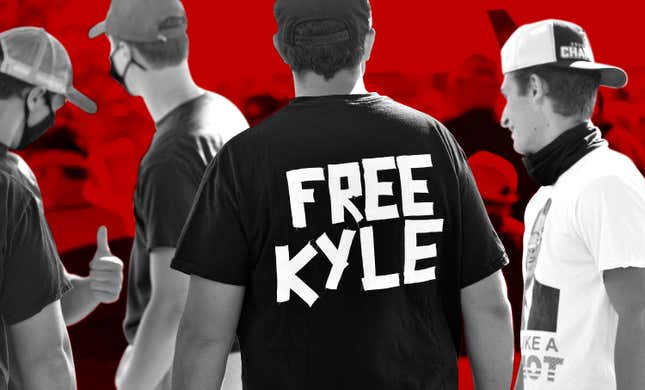The Violent Fantasy of Kyle Rittenhouse
Latest
Image: JOSEPH PREZIOSO
Kyle Rittenhouse, the Illinois teen charged with shooting three protestors in Kenosha, Wisconsin, gets the fanmail congratulating him on his heroic exploits in juvenile detention, because he is 17 years old. Most stories coming from the Right, which render the kid as a righteous arbiter of justice, bury this fact. There’s less valor in juvie, after all.
Rittenhouse is being tried as an adult and the press releases and memes that celebrate him, saying he “policed his community” or rattled off “well-placed shots,” the legal defense that paints him as a righteous member of America’s implicit militia, all seem to intentionally downplay the reality that he is not, in fact, a trained assassin. At the very most, he’s a child soldier. Only the president and his son have doubled down on Rittenhouse’s age, a politically prudent endorsement of two murders reimagined as the folly of youth.
But if you watch the 19-minute video the Daily Caller recorded of Rittenhouse before he shot three people, two of them fatally, the full force of his teenagehood is startling. A doughy kid, he speaks with the unmistakably reedy voice of puberty, plunging into crowds to offer medical care with the rigid vigor of an Eagle Scout. He tells the Caller he’s an EMT—which he can’t be, technically, given his age—before adding he’s “usually a lifeguard.” But he’s had some additional training, he says. He worked part-time at a local YMCA.
Rittenhouse’s big thing was loving cops, which appeared to manifest the way some kids obsess over a particular band
Rittenhouse’s big thing was loving cops, which appeared to manifest the way some kids obsess over a particular band. He was enrolled in the local cadet program and emblazoned his social media accounts with Blue Lives Matter posts; he raised money for an “organization seeking to show the human side of the men and women behind the badge.” The teenager’s decision to travel out-of-state to “defend property” against protestors is the product of decades of white supremacist militia activity in the States; his very public valorization is an acknowledgment that these days, sympathizing with the cops is basically to become one yourself.
In the week after the shooting, statements of support for Rittenhouse were fired off as if pre-written: David Clarke, the brutal former sheriff of Milwaukee, said the killings were justified and Americans “have the right to defend yourself.” Tucker Carlson did a characteristic bit about the protest devolving into “anarchy:” the kid is “not the bad guy here,” he said. In the week after the shooting, half a million dollars donated towards Rittenhouse’s legal defense came through his lawyer’s nonprofit, several hundred thousand more were raised separately through a Christian crowdfunding site, bringing the teenager’s exoneration fund to over $1 million. The man Rittenhouse was prowling the streets with said he and the militia had been acting with the approval of the police.
-

-

-

-

-

-

-

-

-

-

-

-

-

-

-

-

-

-

-

-

-

-

-

-

-

-

-

-

-

-

-

-

-

-

-

-

-

-

-

-








































